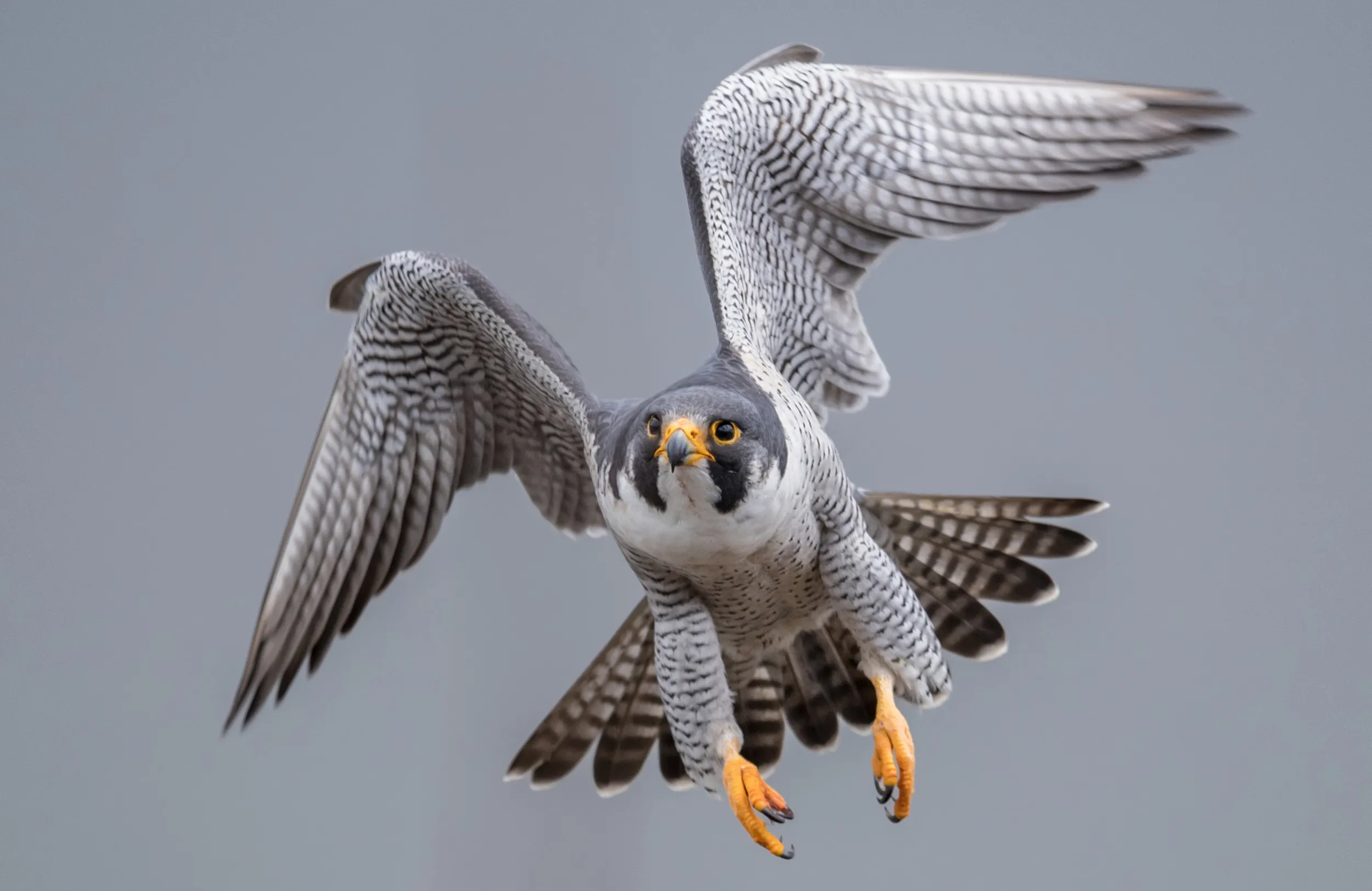With their streamlined body, razor sharp talons and incredible eyesight, Peregrines are the ultimate high-speed hunters. They can reach speeds of around 200 miles per hour as they plummet out of the sky in pursuit of prey, making them the fastest animals on the planet. They tend to eat medium-sized birds, such as wading birds and pigeons, but have also been known to take smaller birds, and even bats.
To help protect their delicate eyes from wind and dust as they hurtle through the air, Peregrines have special built in ‘goggles’ in the form of a third eyelid that they can draw across their eyes. This membrane is semi-transparent, allowing them to keep their eyes locked on to their target.
In summer, you’re most likely to see them in upland areas of Wales, southern Scotland and north-west England, although they are spreading south and east. In winter, Peregrines that breed in the uplands often move lower down to estuaries and coasts.




